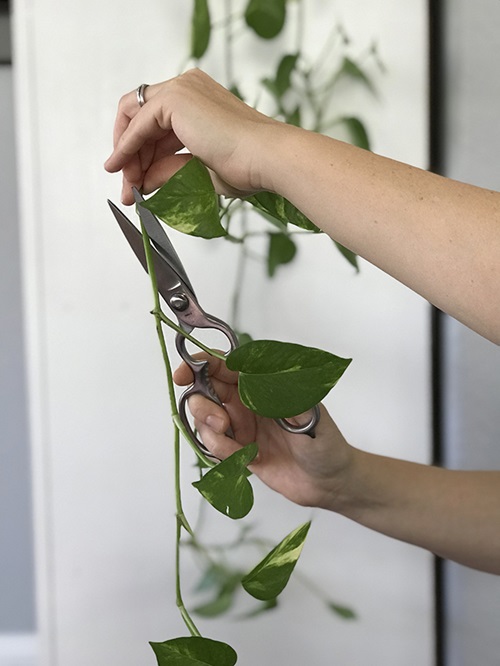Discover the best tips on How to Get Pothos to Trail and maximize the plant’s beauty with this comprehensive guide!
Pothos is certainly a showstopper when it comes to gracing a spot with enchanting tropical vines, and if you have started to grow it recently, understanding what it needs to trail beautifully is totally worth it.
How to Get Pothos to Trail
1. Make the Most of Gravity
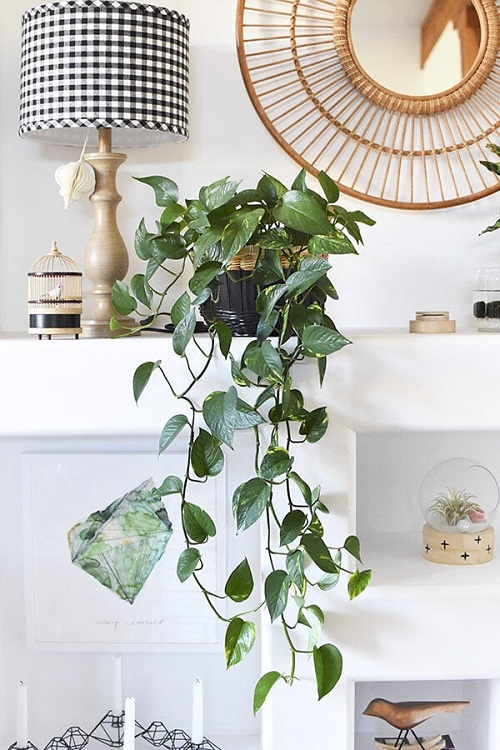
Placing the plant on a high shelf or hanging it above eye level allows the vines to naturally trail downwards, adding a touch of drama to your décor.
Ensure that the placement receives adequate indirect light to prevent legginess in the vines.
For even better results, avoid placing the plant in spots with direct drafts, as this can stress the leaves and hinder their trailing growth.
2. Pick the Perfect Pot
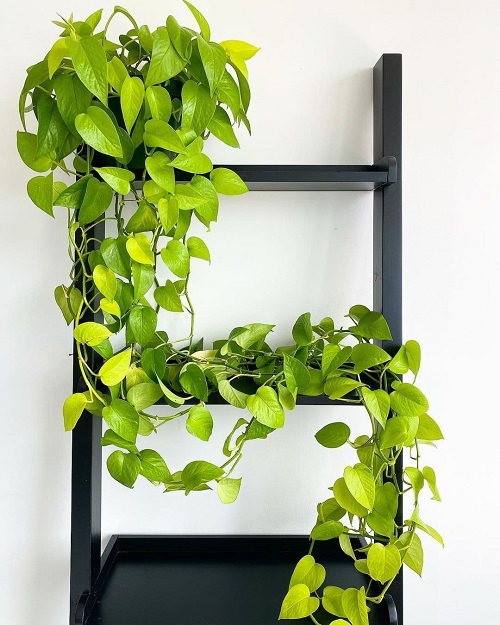
Choose a hanging basket or a tall, narrow pot that supports the plant’s downward trailing. This will not only enhance its appearance but also provide the ideal growing conditions.
Look for containers with excellent drainage to avoid waterlogging, which can harm the roots.
You can also use pots with built-in saucers or hanging pots with liners that can make maintenance easier and prevent dripping of water while keeping your space clean.
3. Trim with Precision
Regular pruning is essential for promoting full, dense growth and maintaining the desired shape. Simply cut back the stem to a healthy node above a leaf for the best results.
Remember to sterilize your pruning tools before each use to prevent the spread of diseases.
It is best to prune during the growing season (spring, summer, and early fall) to encourage quicker recovery and vigorous regrowth.
4. Fertilize Regularly
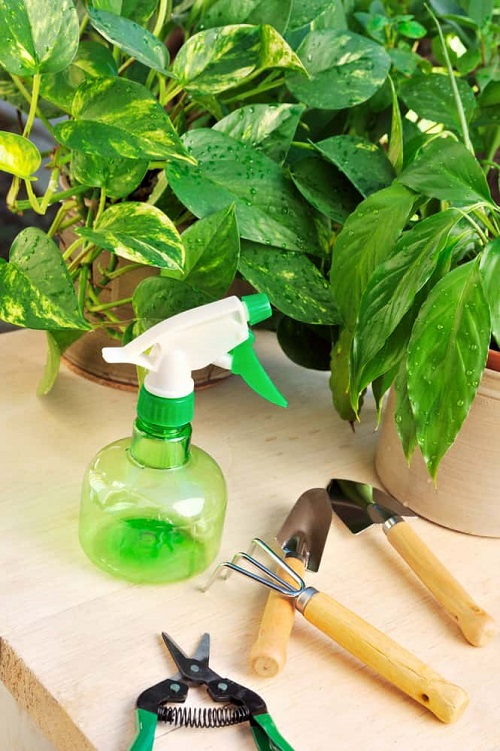
Ensure your pothos has the nutrients it needs for healthy growth by using a balanced, water-soluble fertilizer in weaker one-quarter strength every two weeks during the growing season.
It is important to maintain a balance while fertilizing because over-fertilizing can cause salt buildup in the soil, leading to root burn.
Tip: Flush the soil with water every three-four months to remove excess salts and keep the plant thriving.
5. Train the Vines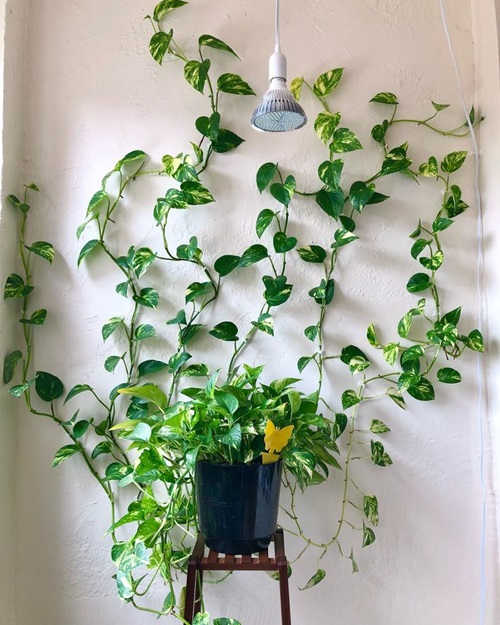
Gently tie or tuck the trailing vines into the support structure as they grow. This will encourage the plant to grow in the desired direction and create a more structured appearance.
You can use soft ties, like twine or Velcro plant ties, to avoid damaging the stems.
If you want to be more creative, consider wrapping the vines around decorative hoops or grids to create unique shapes.
6. Give it Some Rest

Pothos plants benefit from occasional breaks, so allow the plant to rest for a few weeks by reducing watering and fertilizing. This will promote healthier growth and rejuvenate the plant. During the resting phase, you should check the leaves for signs of stress, such as yellowing, to ensure the plant isn’t under-watered.
Also, keep the soil slightly damp to avoid completely drying out the roots.
7. Rotate Regularly

Regularly rotating your pothos plant will encourage even growth, help the vines trail in all directions, and give your plant a more natural appearance.
Rotate the plant by a quarter turn weekly to ensure all sides receive equal light exposure. This will prevent the plant from leaning toward one direction and ensure a fuller appearance.
8. Handle with Care
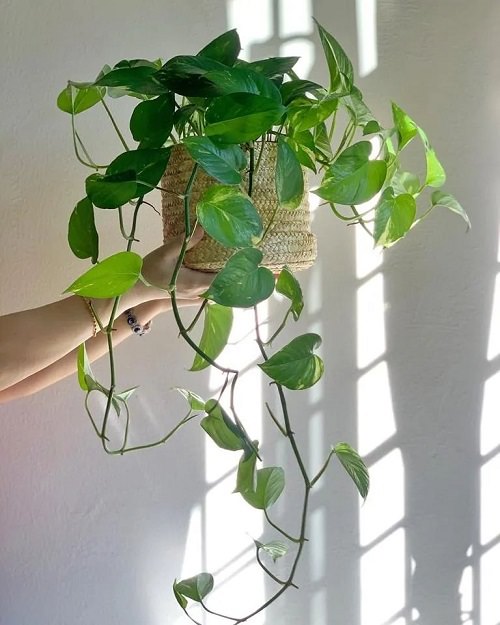
Avoid pulling or tugging on the vines, as this can cause the stems to break. If necessary, gently guide the vines into the desired position using ties or clips as suggested above.
You should always inspect the stems for weak or damaged spots before adjusting them. If a vine accidentally breaks, propagate it in water or soil to create a new plant or simply plant it in the same container for a bushier appearance.
9. Protect from Pets

If you have pets, be sure to keep them away from the pothos plant, as they can easily damage the delicate vines.
Use hanging pots or elevated plant stands to keep the pothos out of reach. Also, go for an out-of-the-box idea of using these natural and homemade pet deterrents on the pots to discourage cats and dogs from approaching.
10. Train with Support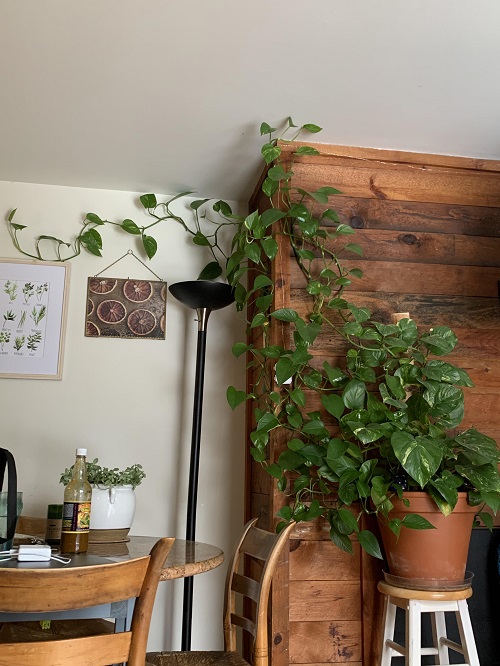
Train your pothos along the wall or use a trellis and direct the plant in the desired direction, enhancing its beauty. For taller trellises, you can guide the vines upwards before allowing them to cascade for a fuller effect.
Remember to check the ties or clips periodically to ensure they are not cutting into the stems as they grow thicker.


